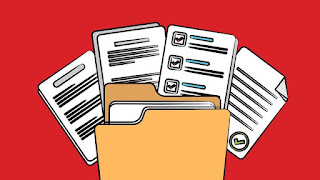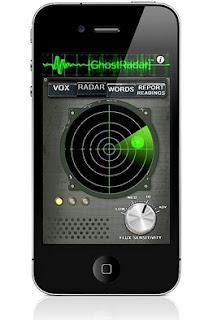The Paranormal Team Starter Checklist: Important Documents
I have been the Case Manager of Antietam Paranormal Society since its conception in 2008. I was instrumental in creating the foundation of our team and all the protocols for case management (and pretty much all the other formal guidelines for the team). In the early days I scoured the internet and books for how to investigate the paranormal, how to document the paranormal and more. I had no idea what to look for or what to document in those days, so I just created a document for pretty much everything. I will say that some how to books on paranormal investigation had a section that included some of the documents recommended for a paranormal case file, Troy Taylors Ghost Hunter's Guidebook was probably the best, but in all things you have to adapt them to your particular cases. These are a few of the documents that are used the most on our team, but there are a ton of others. We have kept track of all of these variables since we started private investigations in 2009. I have adapted them through the years according to new variables or conditions we want to include, but most of them stay the same.
Investigation Plan: This document is created and printed for the file prior to the investigation. It includes roster information, times, dates, locations, parking, and other pertinent investigation information. In some cases camera placement and hot spot information may have already be determined.
Investigation Data Log: This is one of the most important documents of the investigation. It includes the date of the investigation, time started, name of the client, location name, address, investigators in attendance, camera locations, stationary recorder locations, handheld camera users, and a section for equipment notes. Any equipment broken or with concerns are noted in this area. (We have two types of these documents, one for our 4 channel DVR and one for our 8 channel DVR.)
Investigation Weather Data: This document has the location, investigation date, moon phase/ age, and a listing of weather conditions (temperature, humidity, barometric pressure including high and low, wind speed, and precipitation).
Investigation Activity Log: This document is used to document investigator movement, personal experiences, DVR anomalies, and any other pertinent information that would be useful for audio or video review and the final timeline for the case report.
Client Confidentiality Release: This document is for the Case Manager to have the client sign. It gives us permission to release information about the location which includes or not limited to; audio, video, address, site name, pictures, or results of the investigation.
Research Outline: Not every investigation will have this included on the date of the investigation. If we did a minimal research it will be the form included. If we did extensive research then a full research report will be included in the file.
Baseline Data Log/ Investigation Baseline Readings: This form is to be filled out by the individuals completing baseline readings. Having a paper copy with the DVR helps any investigators interested in determining the baseline information after doing a session in any particular area. Baseline data includes the rooms Average EMF and Average TEMPERATURE. There is also a section for notable EMF or TEMPERATURE. Make sure to make note of the rooms on the form. In some instances this may be pre-populated.
Baseline/ Environment Outline: This form shows the location, possibly the date (optional) and the room name. This is an excellent form for more than just baselines. It allows us to draw a layout of the location populating it with baseline data, experiences, documented data, etc. It could help us form a more in depth conclusion for anyone who is into visual data.
Pre-Investigation Checklist: This document outlines all of the available equipment which is sorted by the box they are located. This list is adjusted based on the investigation and its needs; which can be checked off to make sure that every item is accounted for before, during, and after the investigation.
Case File Checklist: This document is a checklist for research, documentation, data analysis, and review. It lists all of the data to make sure it was all reviewed and who reviewed the data. It also includes sections for investigators to be listed to check off when they submit their audio, video, and investigation reports.
Case Liaison Client Information and Checklist: This document is rarely used however you may encounter it in a file. If someone within the group has a location that they are the representative for, they need to create this form with information for us to keep on file, prior to us setting up an investigation. Information includes names, phone numbers, checklists, research, etc.
Client Confidentiality Release: This document outlines the date of the investigation, location name, location address, and it includes a series of "articles" of information release that the client or representative is required to state if they do or do not allow the release with a signature. This gives a formal documentation and visual representation of what we as a paranormal team will do with their information at any given time. If they do not allow release it will stay sealed indefinitely.
Investigator Liability Waiver and Confidentiality: This document will be in every private residence investigation and on preliminary investigations for other locations that will have subsequent investigations (It will be noted.). It is a form for us to fill out showing that each investigator involved has waived any liability from the owner/ representative of the location and it outlines the confidentiality agreement that any investigator has entered as a member/ investigator with Antietam Paranormal Society.
Waiver of Liability and Hold Harmless Agreement: This document will be in every private residence investigation and on preliminary investigations for other locations that will have subsequent investigations (It will be noted.). It is a form for clients and location representatives to fill out waiving liability for us to do an investigation in their location. It also outlines a liability waiver for us if they are participating in the investigation with us.
One of the biggest issues that I see with paranormal teams and investigators is the lack of documentation or permission. While ours may seem like overkill, there is never such a thing as too much documentation. Remember that lacking any type of information will mean that you cannot validate your data and that you have no formal permission to be doing any investigation or releasing any information. Always make sure you set a precedent, create a protocol to CYA, dot your i's and cross your t's.
Rebecca Boyer
Co-Founder/ Case Manager
Antietam Paranormal Society




Comments
Post a Comment